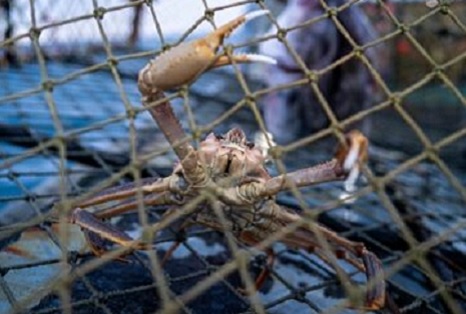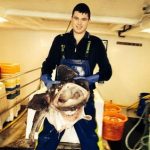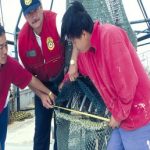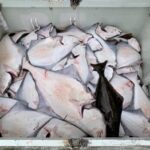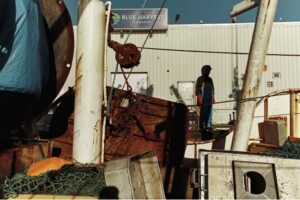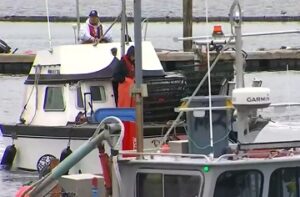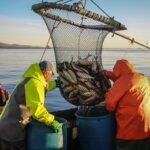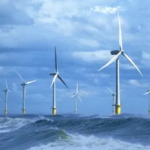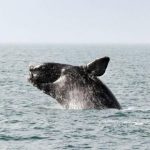Tag Archives: Jamie Goen
Alaska Bering Sea Crabbers Welcome Representation on NPFMC
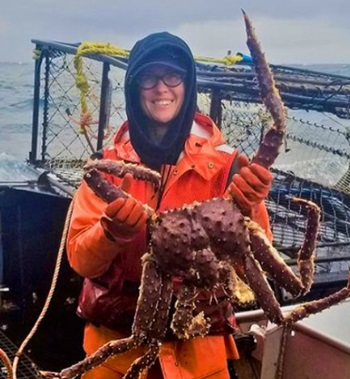 In a significant development for the Alaska Bering Sea crab industry, the U.S. Secretary of Commerce has announced the appointment of Jamie Goen, a dedicated advocate from the Alaska Bering Sea Crabbers (ABSC) to the North Pacific Fishery Management Council (NPFMC). Goen will fill the vacant Washington state seat for the remainder of the term, following the unexpected passing of former member Kenny Down. This appointment marks a two-year term where Goen is expected to continue the work of ensuring fair and sustainable fisheries management. Goen’s appointment has been met with enthusiasm from the crab fishing community, which has long valued her commitment to the industry. more, >>CLICK TO READ<<10:30
In a significant development for the Alaska Bering Sea crab industry, the U.S. Secretary of Commerce has announced the appointment of Jamie Goen, a dedicated advocate from the Alaska Bering Sea Crabbers (ABSC) to the North Pacific Fishery Management Council (NPFMC). Goen will fill the vacant Washington state seat for the remainder of the term, following the unexpected passing of former member Kenny Down. This appointment marks a two-year term where Goen is expected to continue the work of ensuring fair and sustainable fisheries management. Goen’s appointment has been met with enthusiasm from the crab fishing community, which has long valued her commitment to the industry. more, >>CLICK TO READ<<10:30
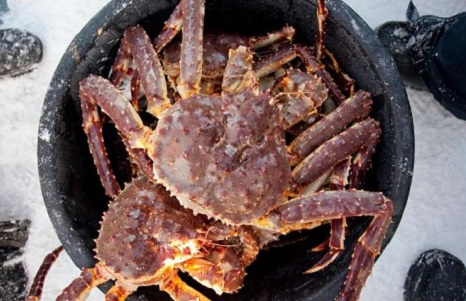
Bristol Bay red king crab, tanner crab fisheries open Sunday
The Bristol Bay red king crab fishery is back on track, after being closed for two years, with a total allowable catch of 2.15 million pounds – just a bit lower than when it was last opened in 2020 at 2.6 million pounds. The announcement on Friday, Oct. 6, was cheered by crab captains and Alaska Bering Sea Crabbers, as a way to get back out doing what they loved, pay some bills, and keep crew working, all while keeping the crab resource sustainable for generations to come. Veteran crabber Glenn Casto, captain of the FV Pinnacle, called it a start in the right direction, that will help pay some bills and help out crew. >>click to read<< 08:20
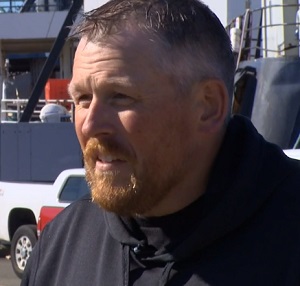
Alaska cancels snow crab harvest again due to population concerns
Crabbers from the Pacific Northwest who fish in Alaska had been watching and waiting for recommendations from the North Pacific Fishery Management Council, which met Thursday and Friday. Following the meetings, the Alaska Department of Fish and Game said Bering snow crab season will be closed for 2023-2024; Bristol Bay red king crab will open. Tanner crab will also be open for commercial fishermen. Both the snow crab and Bristol Bay red king crab seasons were closed in 2023. Crabbers and industry associations warned of the massive impact the decision would have on many small businesses, prompting calls by Congressional officials for an emergency declaration and federal aid. Video, >>click to read<< 08:18
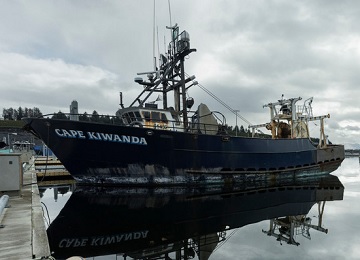
In Depth: Alaska’s Fisheries Are Collapsing. This Congresswoman Is Taking on the Industry She Says Is to Blame.
The late 1990s and early 2000s were boomtimes for halibut fishermen in Alaska. Over 80 million pounds of the flatfish were being harvested annually. Deckhands could earn $250,000 a season. The small boat harbor in the southcentral city of Homer, known as the “halibut capital of the world,” was bustling. Erik Velsko, 39, was one of those fishermen. He started buying annual shares in 2001 when the halibut population was at near historic highs. But within a few years, the stock plummeted by more than half and the quotas for commercial fishermen were slashed accordingly. Halibut wasn’t the only so-called directed fishery to experience such a catastrophic drop. The crab fleet — made famous in the reality show “Deadliest Catch” — has been mostly stuck in port for two years after the near total collapse of the snow crab population and the decades long decline of red king crab. Photos, >click to read< 11:42
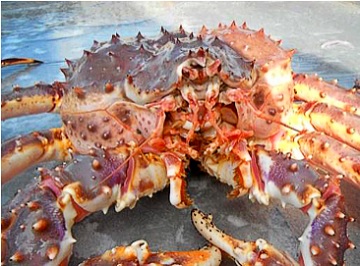
Alaska crab fishery collapse seen as warning about Bering Sea transformation
Less than five years ago, prospects appeared bright for Bering Sea crab fishers. Stocks were abundant and healthy, federal biologists said, and prices were near all-time highs. Now two dominant crab harvests have been canceled for lack of fish. For the first time, the Alaska Department of Fish and Game in October canceled the 2022-2023 harvest of Bering Sea snow crab, and it also announced the second consecutive year of closure for another important harvest, that of Bristol Bay red king crab. What has happened between then and now? A sustained marine heat wave that prevented ice formation in the Bering Sea for two winters, thus vastly altering ocean conditions and fish health. “We lost billions of snow crab in a matter of months,”,,, >click to read< 18:54
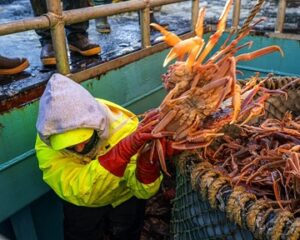
Disaster declaration unlocks potential federal aid for Alaska crabbers
A Commerce Department disaster declaration for Bering Sea crab and some Alaska and Washington salmon fisheries sets the stage for an end-of-the-year push to secure federal funds to help fleets and communities. The declaration announced Friday covers the Bristol Bay king crab harvests suspended for the past two years, and the snow crab harvest that next year will be canceled for the first time ever. Other fisheries covered by the declaration include the 2021 western Alaska Kuskokwim River salmon harvests as well as 2019 salmon fisheries in the Puget Sound and the 2020 Washington ocean salmon fisheries. >click to read< 08:04
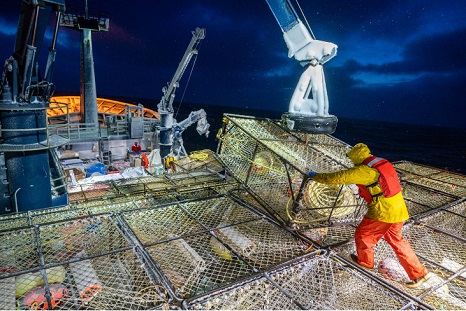
Bering Sea crab collapse spurs push for stronger conservation measures
For Bering Sea crabber Gretar Gudmundsson, December is a month for preparing his two boats for the winter harvest season. But not this year. For the first time, the winter snow crab season has been scuttled. The move has upended seasonal rhythms, and the financial stability of a crab fleet already slammed by a two-year shutdown of the fall harvest of red king crab. “We didn’t ship up any groceries. We didn’t recruit any crew. We’re not laying on fuel. Nothing is happening,” Gudmundsson said. Crabbers are pressing for more restrictions on pollock fleets, which deploy large cone-shaped trawl nets to scoop up more than 3.2 billion pounds annually of this fish in the biggest single-species harvest in North America. >click to read< 11:55
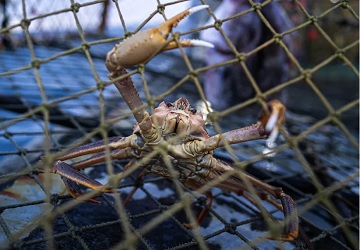
Decline of Bering Sea snow crab fishery demands swift action
Billions of crabs have vanished off the coast of Alaska, and with them, the fishing season for the Bering Sea crab fleet. This is grim news for a fleet that has fished crabs under science-based catch limits for years, providing healthy wild-caught seafood to the world and bringing jobs and income throughout Alaska and the Pacific Northwest. It’s also bad news for the communities of the Bering Sea, like St. Paul Island, where the economy is almost entirely dependent on the snow crab fishery. >click to read< 20:44
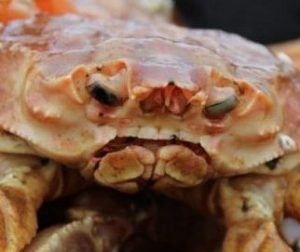
Did climate change really kill billions of snow crabs in Alaska? Here’s what experts say
Some fishers and crab experts have put forward a different idea: They’ve suggested that fishing, particularly the unintentional capture of crabs in fishing gear known as trawls, also contributed to the loss of the snow crab, or at the very least, impeded the species’ recovery from low population levels. The snow crab fishing season closure has amplified a chorus of concerns around Alaska’s trawling industry — mainly from within the fishery sector itself — and the knowledge gaps around its potential impact on fisheries. >click to read< 08:29
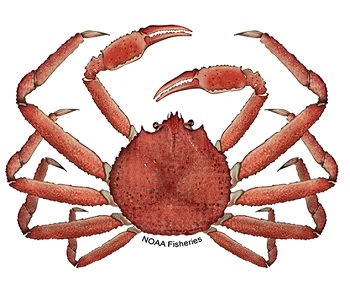
Did climate change really kill billions of snow crabs in Alaska?
In October 2022, the National Oceanic and Atmospheric Administration (NOAA) announced that the lucrative snow crab fishery in the Bering Sea would close for the first time, following a population decline of 80% between 2018 and 2022. While fisheries managers and biologists say climate change is to blame for the species’ retreat, some fishers and crab experts suggest that trawling bycatch and other fishing activity may have played a role in the snow crab’s decline. The fishery’s closure has amplified a chorus of concerns about Alaska’s trawling industry and the knowledge gaps around its potential impact on fisheries. The disappearance of billions snow crabs from the Bering Sea has captivated the world’s attention since Alaska shut down the fishery for the first time in October 2022. But where exactly did these snow crabs go? And what caused them to vanish so quickly? >click to read< 08:02
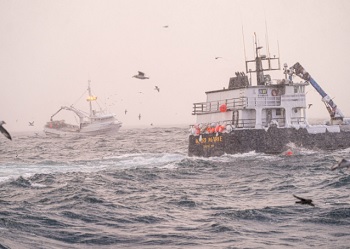
Massive losses predicted from Bering Sea crab closures
While other crab stocks have been declining in the North Pacific for years, the snow crab fishery’s collapse is doubly shocking for the industry. Not only is it one of the larger crab fisheries by volume in Alaska, it has also gone from booming and healthy to overfished and collapsing within five years, with little warning or clear explanation. Fishermen who made investments in permits and boats less than five years ago are now looking at bankruptcy. Alaska Bering Sea Crabbers, the trade organization representing the industry, has estimated the direct financial losses at about $500 million. Adding in the ripple effects to the economy, that estimate rises to about $1 billion. >click to read< 07:50
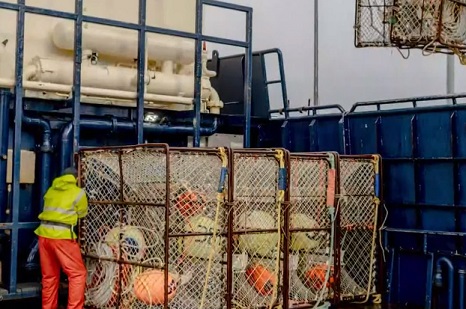
Fishermen fear going out of business after Alaska cancels snow and king crab harvest
For the first time ever, the Bering Sea snow crab harvest is closed, and for the second consecutive year, the Bristol Bay red king crab harvest is as well. The closure will result in fewer King and Snow crabs showing up on the menu, but the biggest impact is being felt by fishermen. “My husband is a 5th generation fisherman. His mom grew up in Ketchikan,” said Bri Dwyer who is a Commercial Fishing Industry photographer and storyteller. Her husband Captain Sean Dwyer is featured on the TV show Deadliest Catch. The family found out with everyone else this week that their crabbing season in the Bering Sea could be nonexistent. Video, >click to read< 08:48
Bering Sea king and snow crab seasons canceled amid population declines – Gabriel Prout co-owns the F/V Silver Spray with his dad and brothers. The Silver Spray is a 116-foot steel crabber that’s homeported in Kodiak. “The real shocking part is the total and complete collapse of the snow crab fishery which no one expected last year when it happened, and a complete closure this year was equally as shocking,” Prout said. >click to read<
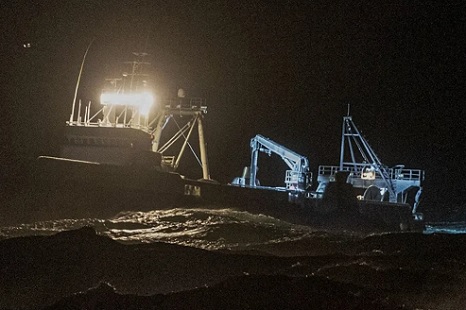
Conservation concerns cancel Alaska’s Bering snow, king crab seasons
Alaska officials have canceled the fall Bristol Bay red king crab harvest, and in a first-ever move, also scuttled the winter harvest of smaller snow crab. The move is a double whammy to a fleet from Alaska, Washington and Oregon pursuing Bering Sea crab in harvests that as recently as 2016 grossed $280 million. “I am struggling for words. This is so unbelievable that this is happening,” said Jamie Goen, executive director of the Alaska Bering Sea Crabbers. “We have third-generation fishermen who are going to go out of business.” >click to read< 14:47
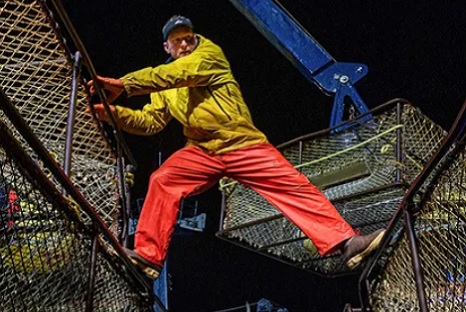
NMFS survey delivers more bad news to Bering Sea crab fleet
A Bering Sea survey by federal scientists contains more bad news for Alaska, Washington and Oregon-based crabbers hoping for an upturn in upcoming harvests that last year fell to rock-bottom levels. The federal survey results for Bristol Bay king crab are bleak and crabbers have been warned that for a second consecutive year there may not be a fall harvest, according to Jamie Goen, executive director of the Alaska Bering Sea Crabbers. “We have got an emergency,” Goen said. “I’m trying to get Congress to act to help.” The National Marine Fisheries Service survey does offer hope for improved harvests three to five years from now, as young snow crabs grow to adult size. >click to read< 12:20
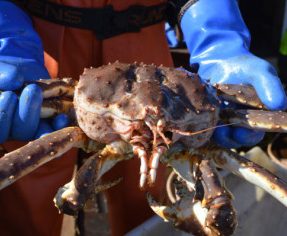
NPFMC wrestles with crab crisis – Disagreement in industry on expanding red king crab savings area
Commercial crab crews normally embarked on the Bristol Bay red king crab fishery are on the docks this October, with their fishery closed for lack of sufficient stocks, while federal fishery managers ponder how to restore the abundance required for the harvest to resume in coming seasons. During its October meeting, held virtually because of the ongoing pandemic, the North Pacific Fishery Management Council voted to request an analysis on likely impacts of expanding the red king crab savings area through emergency rule to shift the northern boundary from,,, >click to read< 08:15
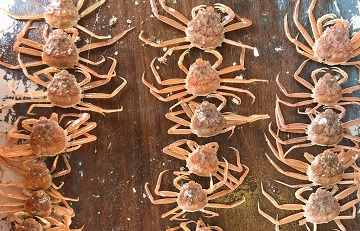
Alaska snow crab harvest slashed by nearly 90% after population crash in a warming Bering Sea
The snow crab is a mainstay of the Alaska crab boat fleet, much of it based in Washington, and the 2021-22 catch limit of 5.6 million pounds, announced Friday, is down 88% from the previous season. The 2021 fall harvest of Bristol Bay red king crab, another important source of revenue for that fleet, was canceled for this year because of too few females. The combined impacts of the closure and snow crab cutbacks are a big financial hit to crabbers who in past years have grossed more than $200 million from the two harvests. At a meeting of the North Pacific Fishery Management Council this week, crabbers called for additional restrictions in other harvests. >click to read< 09:30
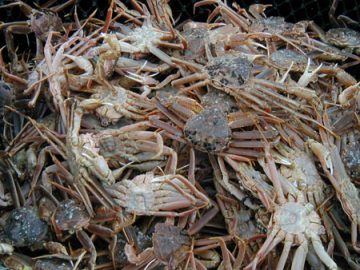
Valuable crab populations are in a ‘very scary’ decline in warming Bering Sea
The forecast for the 2022 winter snow crab season is bleak. At best, it is expected to be considerably less than 12 million pounds. That would be down from a 2021 harvest of 45 million pounds,,, The iconic Bering Sea red king crab, which can grow up to 24 pounds with a leg-span up to 5 feet, also are in trouble. In a big blow to the commercial crabbers, many of whom are based in Washington, the October harvest for these crab has been canceled, something that has only happened three times before. Overall conservation measures are expected to wipe out most of the value of the annual Bering Sea crab harvest, worth more than $160 million during the past year, according to Jamie Goen, executive director of the Seattle-based Alaska Bering Sea Crabbers. >click to read< 13:54
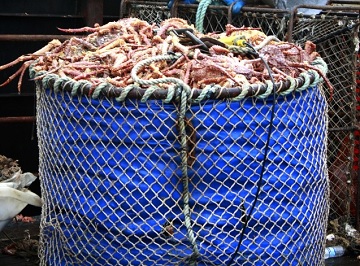
Bering Sea crab fleet braces for another blow
The commercial fishery has been around since 1966. In the 55 years since then, there have been just two other closures: once in the 1980s and again in the 1990s. The species is world-renowned and was largely made famous by the popular reality tv show “Deadliest Catch.” “It’s big news, and it’s hitting our industry really hard,” said Jamie Goen, executive director for Alaska Bering Sea Crabbers,,, “We’re disappointed and deeply concerned.” But, she said, it’s not only the fishermen who will be impacted. This hit affects everyone in the industry, roughly 70 vessels and over 400 fishermen and their families, along with the processors and fishing communities that rely on crab revenues. “We could kind of see a closure was coming, we just didn’t quite know when,” she said. >click to read< 08:36
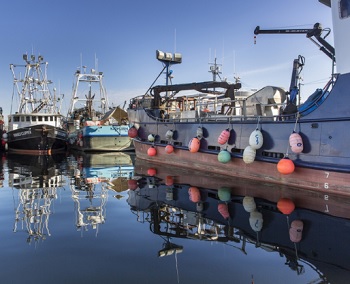
Behind the scenes with Seattle’s crab experts
It’s king crab season in the Bering Sea. That means around 300 people, including many from Fishermen’s Terminal in Seattle, the home port to the North Pacific Fishing Fleet, fly into Dutch Harbor, Alaska, for the harvest. And when king crab season is over, many of these fishermen and women switch to bairdi crab and snow crab. Which means they’ll be busy for four to five months and there will be a lot more crab on the market. As the executive director of Alaska Bering Sea Crabbers, a nonprofit trade association that represents the crab industry, Jamie Goen knows a lot about the work that brings crab from the bottom of the sea to our tables. >click to read< 09:19






